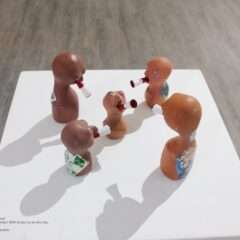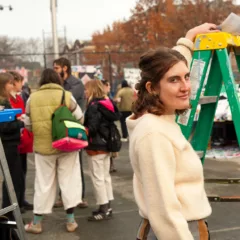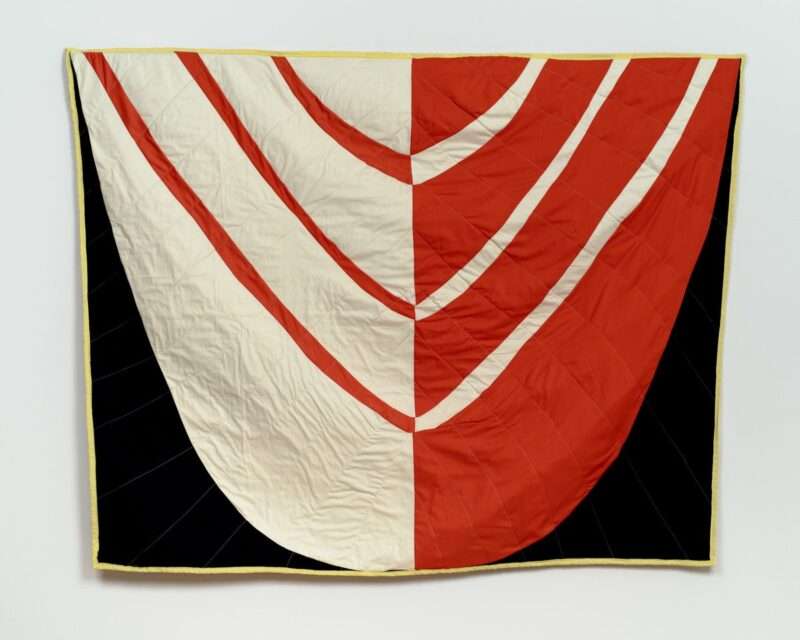
At Fleisher/Ollman Gallery, 10 quilts on the wall. None have the radial composition found in traditional quilts, and they’re smaller too. About painting-sized. They look like paintings, with bands of saturated color that streak across the “picture plane.” They look like Hard-Edge paintings from the mid-20th-century.
Dr. Jessica Veevers argues that critics were erroneous to believe artists when they fallaciously claimed their Hard-Edge paintings moved “toward transcendent communion with the spiritual/immaterial/universal.” As a result, art critics and historians found materiality too basic for serious investigation. It’s a trap, believing an idea is greater than the object(ive) reality of a work of art.
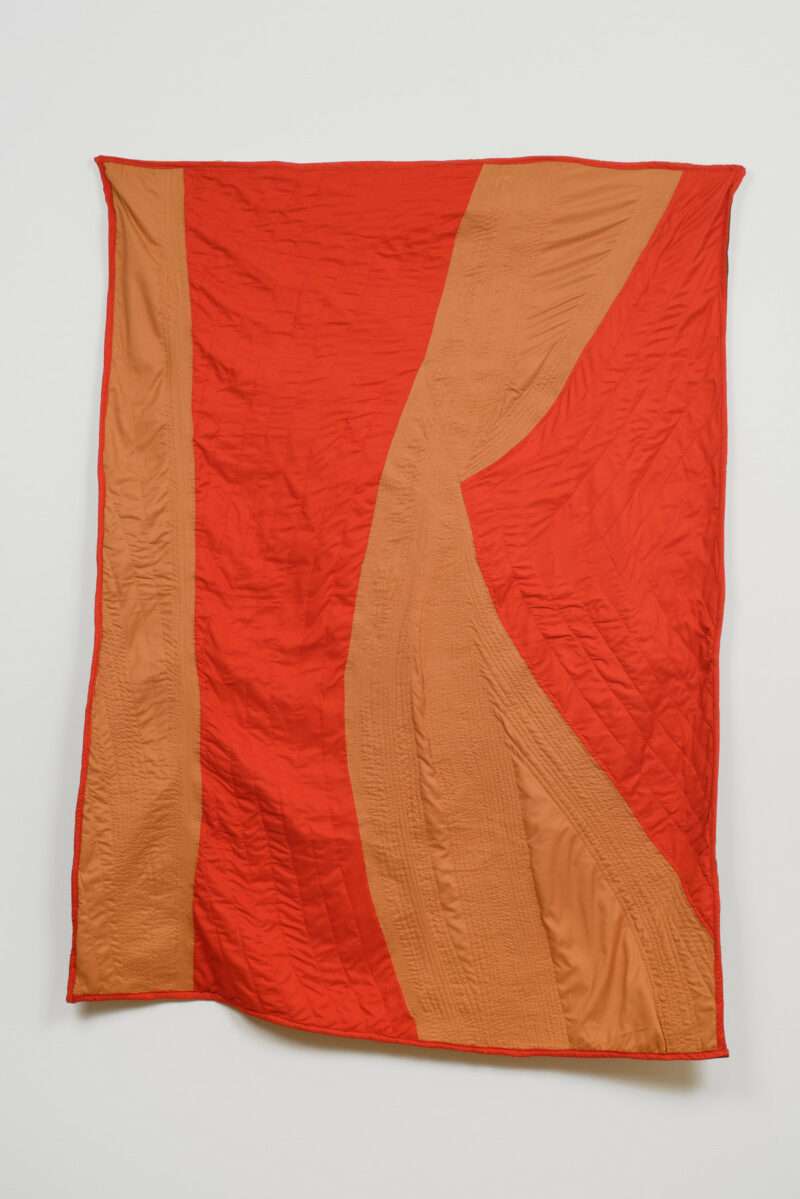
Because of his lack of technique, Jayson Musson’s new works won’t escape material analysis. The fabric wrinkles, it bunches around angular stitches. The quilts are charming as they shrug, lean against the wall unevenly. On the spectrum of coulda-done-better and didn’t-know-better, it’s hard to know where Musson’s quilts lie. At any rate, they are his personal folk. There is no well-known allegory of the veil, which is seemingly referenced in Musson’s solo exhibition title, Allegory of the Veil. The introductory piece in the gallery is titled, “Flag for an Imaginary Country”.
That piece uses symbolic colors; ribbons of white and red form a swooping half-oval that sits against black negative space. Yellow binding highlights the grand affair. Pride is the shape of a shield, something that covers the chest. The large form blazoned across “Flag for an Imaginary Country” defends someone, has pride for something. “Imaginary” could mean, “longed for.”
The reliable throughline in Musson’s art career is the analysis of desire. The Philadelphia-based artist can fixate on a coveted object, his own or society’s, before dissecting it with humor and unbidden empathy. Obama, Coogi, art world prestige, and now, as he puts it, “supportive social units.” This is where the quilts come in. The gallery text quotes Musson as he explains that supportive social units, “become a bulwark against the many annihilating forces of today’s world.” On the wall directly across from “Flag for an Imaginary Country” is a piece titled, “Aegis,” which means “protection.”
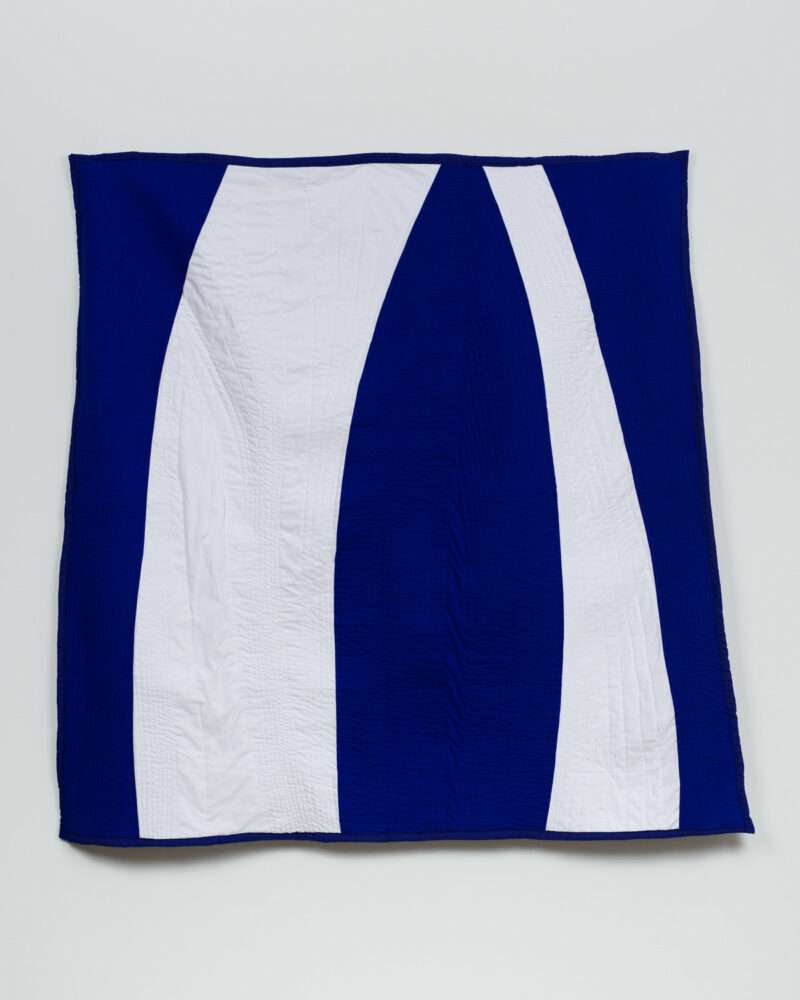
Musson’s stitchery is ornate. His quilts have an abundance of straight stitches, like veins in a curvaceous corn leaf. Lines of stitch are bound within the color form. The don’t run completely parallel, except in “Night Lake,” where blocks of blue and black form a horizon line. Generally, the stitches roam away from each other before their orbits collide elsewhere on the quilt top. The varying density of thread in “Sonora I” causes the fabric to billow and create shapes within shapes. In “Pillars of the Sky,” there is a white upside down V-shape. On the right side, stitches follow the length of pearly cotton and on the left, they begin to fan and spread out as the shape grows more narrow. When a strip of stitches on the leftmost edge meet together with the rest, another upside-down V-shape is created within the white.
The characteristically bombastic palette that Musson uses in Allegory of the Veil is achieved with those cheap swatches of fabric that almost never becomes clothing. Bright pink and purple columns compete for foreground status in “Rosa Rosa.” They bend against each other in a slow dance. “Copernicus Sketch” uses a rich brown and a thin yellow fabric to depict a sun in the sky. Only “Pneuma,” with it’s tan and white surface passes within the trend of “beigification.” Musson uses color with a gusto that Stanley Whitney would probably appreciate.
The gallery text relates this work to the quilts of Gee’s Bend. It’s a flimsy comparison.They do not resemble each other in color, composition, technique, gender, context or lineage. That is not to say the women of Gee’s Bend should never be discussed within a contemporary arts context. Akili Davis was the assistant curator for The Philadelphia Museum’s 2019 exhibition, Souls Grown Deep: Artists of the African American South and she went on to work with the Souls Grown Deep Foundation. On the phone, Davis talked with me about the conflict between artistry and naivete.
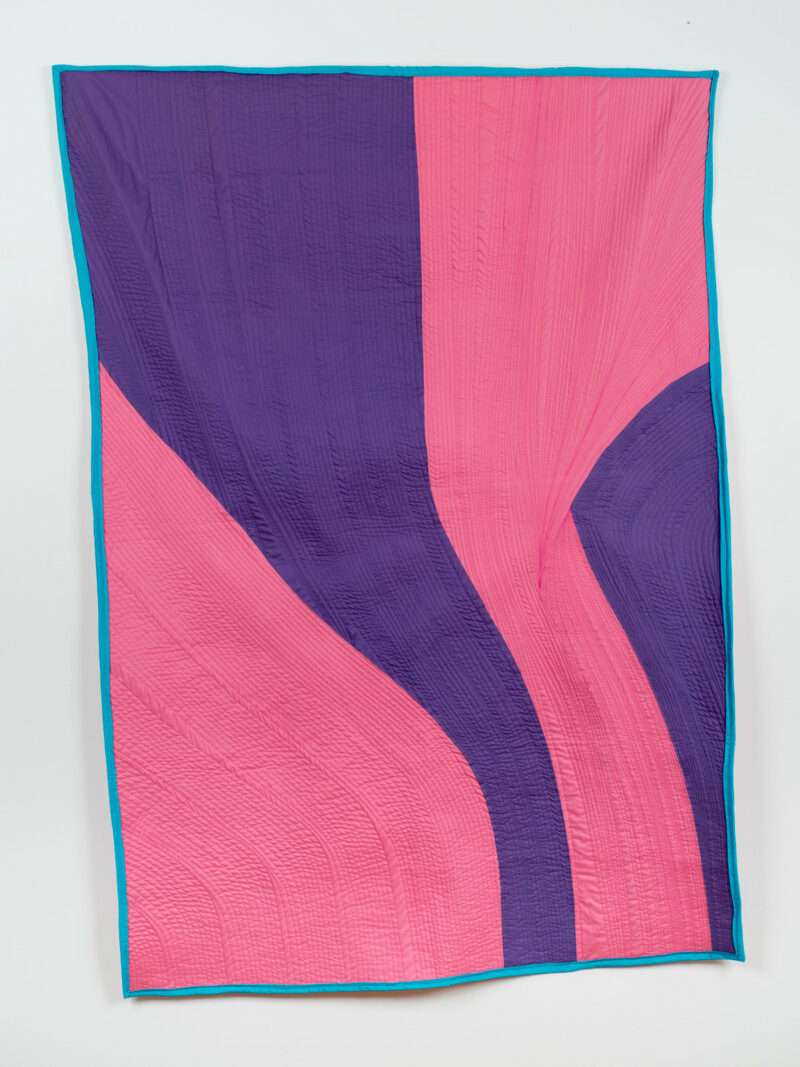
“In any community, there are people who bring an artistic flair to their work, even when it comes to a common skill like quilting, which all the women in Gee’s Bend had to cultivate,” she explained. “It’s a misconception to say that these women didn’t know they were artists. Rather, they were not seen as artists by the art world.”
For better or worse, Musson will forever be known as an artist, and a deservedly accomplished one at that. His desire might be to reach into a folk practice that exemplifies community, but who will build kinship with these works? Will they do it because of how they look on the wall or because of how they feel against the skin? As painterly objects, Musson’s quilts are a playful variation against the rigid separation of subject and material. The potential for their other states of being will be up to whoever encounters them next.
Jayson Musson: The Allegory of the Veil, to June 1, 2024. Fleisher-Ollman Gallery


